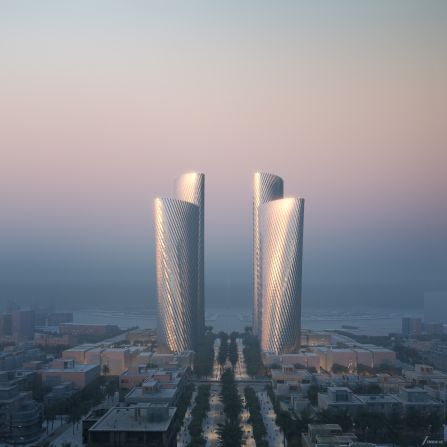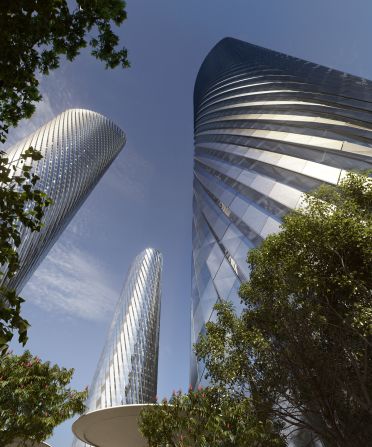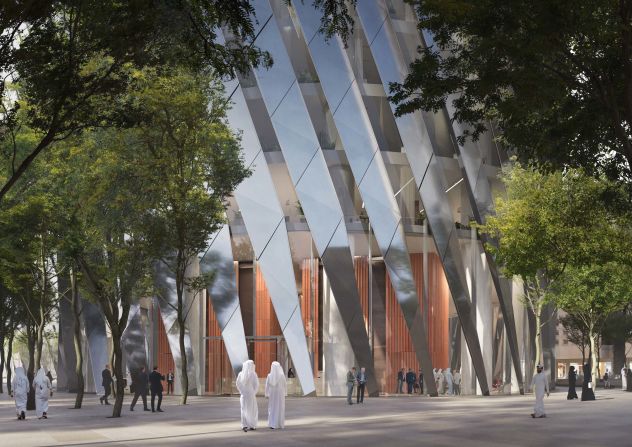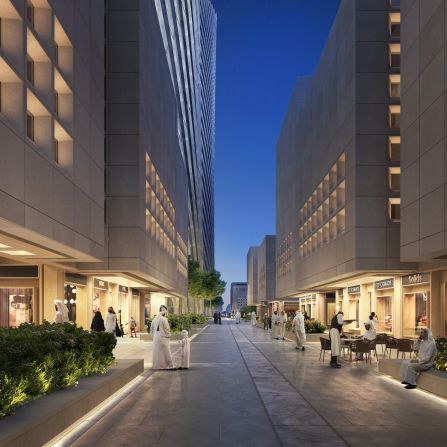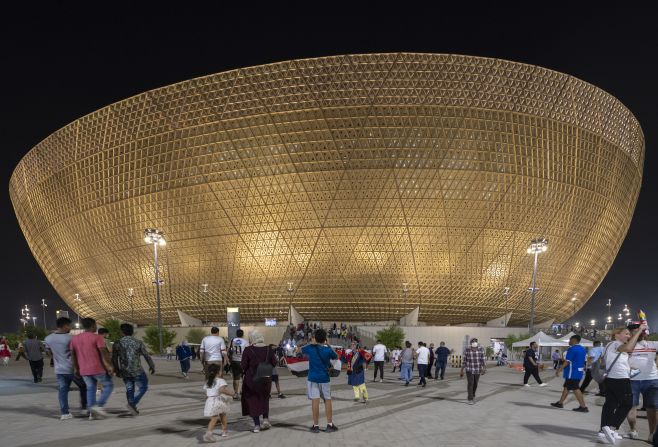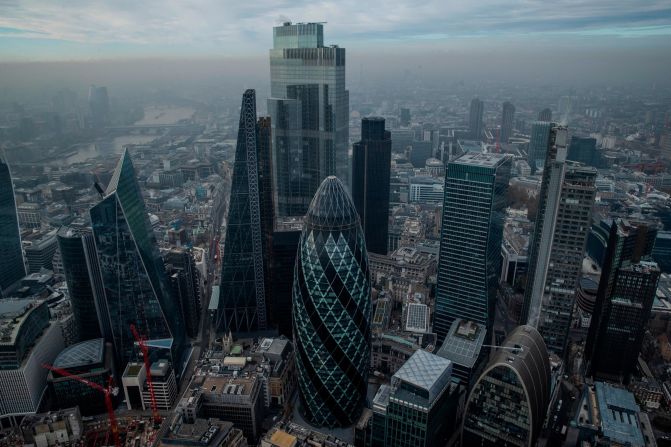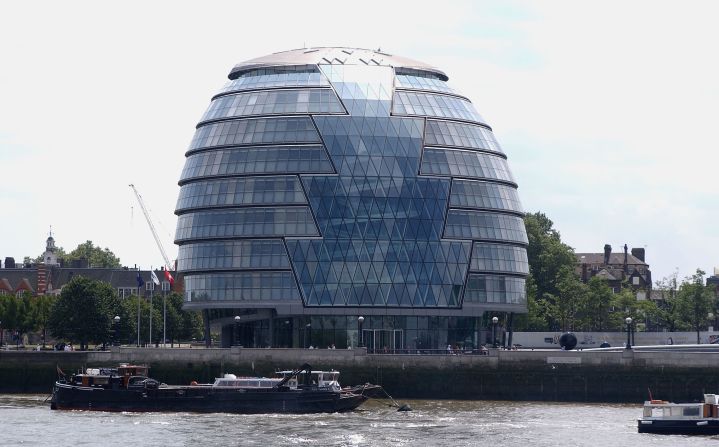Editor’s Note: This CNN series is, or was, sponsored by the country it highlights. CNN retains full editorial control over subject matter, reporting and frequency of the articles and videos within the sponsorship, in compliance with our policy.
Lord Norman Foster, renowned as one of the world’s foremost architects, has dedicated decades to redefining the concept of tall buildings. His portfolio boasts iconic structures such as London’s 30 St Mary Axe (better known to Londoners as the “Gherkin”) and the HSBC building in Hong Kong. Now, he’s set his sights on Qatar.
Currently nearing completion and set to reach a height of 301 meters (988 feet), Foster’s Lusail Towers are poised to claim the title of Qatar’s tallest buildings, surpassing the current record holder, The Torch Doha.
Part of a 1.1 million-square-meter project conceived by Foster + Partners, the towers’ construction is a pivotal component of the larger masterplan for the city of Lusail, situated 10 miles (16 kilometers) north of the capital, Doha.
Breaking ground in January 2020, the Lusail Towers stand amidst a plethora of new developments in the area, including Lusail Stadium, also designed by Foster + Partners for the 2022 FIFA World Cup.
Comprising four distinctive blocks, two standing at 70 stories and two at 50 stories, each tower is intended to serve as a hub for Qatar’s financial institutions.
“As an architect, I find myself engaging with cities in their infancy,” Foster said. “We’ve made a mark for what is essentially a new district, laying down infrastructure for future generations.”
Throwing shade
To address the unique challenges presented by Qatar’s hot climate, Foster’s team had to depart from the materials commonly used in skyscrapers in cooler countries – part of what Foster called a decades-long quest to “reinvent the tall building.”
“You think so many times of the tower being a glass tower, but (with) the whole climate here and the issue of sustainability … you really want to defend against solar gain,” he added.
The design incorporates advanced shading and ventilation, while the towers’ exteriors are coated with “marine-grade” aluminum that wraps around the buildings, protecting the glass from strong sunlight while maintaining the views and still letting in natural light.
Central to the project are special shading fins, akin to gills, which not only optimize views and natural lighting for occupants but reduce solar radiation by 70% compared to traditional all-glass towers.
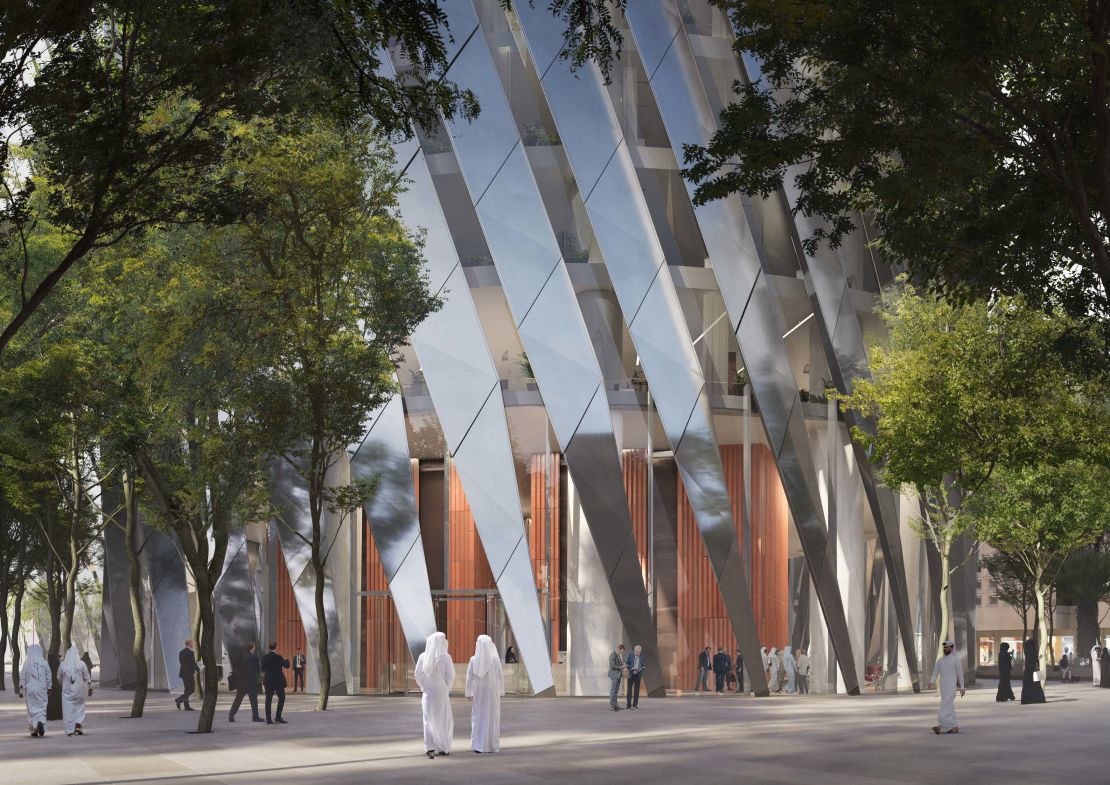
“What we’ve done here is create a sense of identity drawn from real needs,” Foster said. “It’s not a fashionable imposition, it’s generated from the realities of the climate.”
According to Luke Fox, project lead and senior executive partner at Foster + Partners, this shading system contributes to a 35% reduction in cooling requirements and overall energy consumption.
The towers are strategically placed to create maximum shading, and as they rise their shape shifts by rotating 90 degrees.
“We made sure that the towers were deliberately placed to rotate slightly, providing perspectives between them as they rise above ground level. It’s quite unique. They appear as distinct entities,” Fox said.
Building from the ground up
While the towers are poised to become a recognizable landmark for Lusail, Foster believes that a city’s skyline reflects what lies beneath the surface. He says it was crucial for his team to integrate the towers into a “low-scale master plan.”
They are strategically positioned on top of a metro line and at the end of a commercial boulevard linking the waterfront to the nearby football stadium, which recently hosted the final of AFC Asian Cup.
According to Foster, the ground features of the plaza will be instrumental in the overarching objective of transforming the area into a vibrant public space for the future.
“What isn’t always apparent from those distant views is the pedestrian experience. It’s the lower infrastructure that binds these diverse elements together,” Foster said.
The Lusail Towers are set to be completed in phases over the next 12 months.
